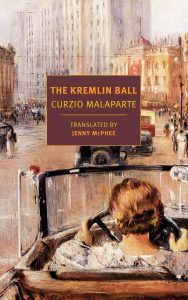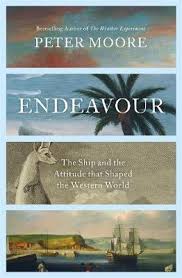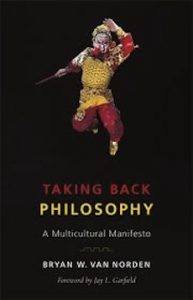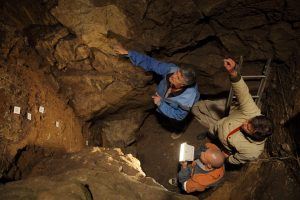Category: Archives
Alex Jones in Blackface
David Cole in Taki’s Magazine:
 Arguably the most alarming thing about the war against Jones is the fact that media leftists have been so quick to boast about the activist role they played in getting him silenced. In years past, the “mainstream” press always took a position of “We just report, we don’t influence,” like they’re bound by Jor-El’s stern proscription against influencing human history. And sure, they “influenced,” they just never admitted it. But these days, “respectable” journos are openly bragging about their role in getting Jones deplatformed.
Arguably the most alarming thing about the war against Jones is the fact that media leftists have been so quick to boast about the activist role they played in getting him silenced. In years past, the “mainstream” press always took a position of “We just report, we don’t influence,” like they’re bound by Jor-El’s stern proscription against influencing human history. And sure, they “influenced,” they just never admitted it. But these days, “respectable” journos are openly bragging about their role in getting Jones deplatformed.
And now, because of those journalistic frauds, here I am, a guy who’s never hesitated to slam conspiracy loons, having to come to the defense of Alex Jones.
More here.
Crazy Rich Identities
Kwami Anthony Appiah in The Atlantic:

The movie Crazy Rich Asians, adapted from Kevin Kwan’s bestselling novel, has been widely celebrated in the United States as a big step toward diversity: It’s a Hollywood movie with an Asian cast. But in Singapore, some people are complaining that the film doesn’t capture their country’s actual diversity. That’s even granting the film’s focus on people who are crazy rich (not—to avoid confusion—crazy and rich, though some are both). “The focus is specifically on characters and faces of East Asian descent, which plays into issues of racism and colorism that still exist, not only in the US but in Asia,” the Singapore journalist Kirsten Han writes in Vox. The film’s “all-Asian boast,” in her view, is “nothing more than a perpetuation of the existing Chinese dominance in mainstream media and pop culture.” Sangeetha Thanapal, an Indian Singaporean writer and activist, takes issue with the way the movie was being sold as “this big win for diversity, as this representative juggernaut,” telling a New York Times reporter, “I think that’s really problematic because if you’re going to sell yourself as that, then you bloody better actually have actual representation.”
To be fair, Kwan’s novel—which was satirizing his Chinese players more than celebrating them—wasn’t meant to cover the Singaporean waterfront. But the way Singapore handles national identity and ethnic difference makes for a fascinating comparison with the United States. It’s a bold experiment in ethnic engineering, and, since Singapore has existed as an independent country for little more than half a century, that experiment has been witnessed in its entirety by many of its inhabitants. (It boasts the third highest life expectancy in the world; the United States is 31st.) The national project was always to be, in a sense, multinational. It’s worth taking notice of how this was achieved, and at what cost.
More here.
‘The Kremlin Ball’ by Curzio Malaparte
Tobias Carroll at The Quarterly Conversation:
 That an author whose chosen pseudonym is a conscious inversion of Napoleon Bonaparte would have a fondness for provocation is no real surprise. Malaparte’s work falls uneasily in the gulf between fiction and nonfiction: 1957’s The Kremlin Ball, newly translated into English by Jenny McPhee, is subtitled (Material For a Novel), and its opening pages set out exactly how fiction and nonfiction will intermingle. “The characters did not originate in the author’s imagination, but were drawn from life, each with his own name, face, words, and actions,” Malaparte writes.
That an author whose chosen pseudonym is a conscious inversion of Napoleon Bonaparte would have a fondness for provocation is no real surprise. Malaparte’s work falls uneasily in the gulf between fiction and nonfiction: 1957’s The Kremlin Ball, newly translated into English by Jenny McPhee, is subtitled (Material For a Novel), and its opening pages set out exactly how fiction and nonfiction will intermingle. “The characters did not originate in the author’s imagination, but were drawn from life, each with his own name, face, words, and actions,” Malaparte writes.
In books like The Skin and Kaputt (the inspiration for the Destroyer album of the same name), Malaparte offered a firsthand view of fascism and its horrific effects, albeit from the perspective of an Italian who was, at one point, a supporter of Mussolini.
more here.
The Ship That Changed the World
Robert Mayhew at Literary Review:
 For readers not of a nautical persuasion, knowing that Captain James Cook’s famous expedition of 1768–71 took place aboard the Endeavour, and that the Endeavour was a type of vessel known as a Whitby collier, probably marks the limit of their interest in the ship that took him to the South Seas. (The really well informed may also know that the Resolution, the flagship for Cook’s second voyage to the South Seas, was the same type of vessel.) While the town of Whitby makes some capital out of its linkage with Cook via a museum, and while maritime historians and enthusiasts have researched the Endeavour exhaustively, the general reader has had no further reason to consider Cook’s ship. Until now, that is. Peter Moore’s elegant and entertaining new book offers us a fascinating biography of the Endeavour, using it as a window onto the broader world of the mid-18th-century English Enlightenment.
For readers not of a nautical persuasion, knowing that Captain James Cook’s famous expedition of 1768–71 took place aboard the Endeavour, and that the Endeavour was a type of vessel known as a Whitby collier, probably marks the limit of their interest in the ship that took him to the South Seas. (The really well informed may also know that the Resolution, the flagship for Cook’s second voyage to the South Seas, was the same type of vessel.) While the town of Whitby makes some capital out of its linkage with Cook via a museum, and while maritime historians and enthusiasts have researched the Endeavour exhaustively, the general reader has had no further reason to consider Cook’s ship. Until now, that is. Peter Moore’s elegant and entertaining new book offers us a fascinating biography of the Endeavour, using it as a window onto the broader world of the mid-18th-century English Enlightenment.
more here.
The Strange Genius of Violette Leduc
Deborah Levy at The Guardian:
 Violette Leduc’s novels are works of genius and also a bit peculiar. It is not surprising that Jean Genet was one of Leduc’s early admirers, as were Simone de Beauvoir and Albert Camus. According to Edmund White’s autobiography My Lives, Genet and Leduc even made an amateur film together, a re‑enactment of a baptism in which Genet, who was an orphan, played the child and Leduc the mother. Both writers were illegitimate, born at a time – Leduc in 1907 – when such things mattered. The theatre of baptism with its narratives of belonging, of being ordained and claimed, must have been very potent to stage. The mind whirls at the thought of what they might have got up to. What a shame the film has been lost.
Violette Leduc’s novels are works of genius and also a bit peculiar. It is not surprising that Jean Genet was one of Leduc’s early admirers, as were Simone de Beauvoir and Albert Camus. According to Edmund White’s autobiography My Lives, Genet and Leduc even made an amateur film together, a re‑enactment of a baptism in which Genet, who was an orphan, played the child and Leduc the mother. Both writers were illegitimate, born at a time – Leduc in 1907 – when such things mattered. The theatre of baptism with its narratives of belonging, of being ordained and claimed, must have been very potent to stage. The mind whirls at the thought of what they might have got up to. What a shame the film has been lost.
If, as White points out, both Proust and Genet “were dismantling all received ideas about the couple, manhood, love and sexual roles”, I would include Leduc in the rearranging of the social and sexual scaffolding of her time.
more here.
Saturday Poem
Body
I know I’m a spirit and I have a body
I know I’m a spirit and I have a chair
I know I’m a spirit and I have a floor
Right wall left wall front wall and back wall
I know there is a wooden floor beneath me and a high ceiling
I know I have a chair I have a place I have a tombstone
Why mention these things
Improve improve yourself
Once again
I have a table
I have a chair I have a body
Anyway I’m
A spirit
Wandering above the body and what’s the body to me
Body micro-body
What has it got to do with me
Why all of a sudden did I decide to take a body
My micro-body well-kept
In which I labour
So much labour for the spirit
Body for spirit
Body
by Lali Tsipi Michaeli
from Paint Me Ablaze
publisher: Carmel, Jerusalem, 2008
Translation, Alexa Christopher-Daniels
Friday, August 24, 2018
Taking Philosophy Forward
Jonardon Ganeri in the Los Angeles Review of Books:
 “IT’S HARDER to get two philosophers to agree,” says the ancient savant, “than two water-clocks.” Philosophers love to disagree, and disagreement is the lifeblood of philosophy. The tools and techniques of philosophy — debate, reasoned deliberation, weighing of evidence, clarification of concepts, consideration of consequences — are all instruments in the management of disagreement. And there is disagreement whenever there is reflection — whenever, that is to say, people think about things, and seek to comprehend and make sense of what is going on in the world around them, or between themselves and others, or inside their own minds. Then the question arises: who is right? Which brings in its train further reflection on who has the better evidence and the sounder arguments and so, inevitably, still more reflection on what it is that counts as good or bad in matters of evidence and argument. Even before the times of Socrates and the Buddha, in the oldest of the surviving Upanishads, we find these questions, and they have been asked ever since by people everywhere.
“IT’S HARDER to get two philosophers to agree,” says the ancient savant, “than two water-clocks.” Philosophers love to disagree, and disagreement is the lifeblood of philosophy. The tools and techniques of philosophy — debate, reasoned deliberation, weighing of evidence, clarification of concepts, consideration of consequences — are all instruments in the management of disagreement. And there is disagreement whenever there is reflection — whenever, that is to say, people think about things, and seek to comprehend and make sense of what is going on in the world around them, or between themselves and others, or inside their own minds. Then the question arises: who is right? Which brings in its train further reflection on who has the better evidence and the sounder arguments and so, inevitably, still more reflection on what it is that counts as good or bad in matters of evidence and argument. Even before the times of Socrates and the Buddha, in the oldest of the surviving Upanishads, we find these questions, and they have been asked ever since by people everywhere.
Because philosophers love disagreement, they also love diversity. There is nothing better in philosophy than a startling, fresh idea, a possibility in the landscape of thought not previously encountered and explored, some new perspective on an old problem, an original refutation to a seemingly inviolable tenet or tenaciously held belief. It’s notoriously much harder to defend a new claim than to knock an old one down; fresh thinking in philosophy is comparatively rare, and all the more exciting for it. And, perhaps exactly because it deals with issues at a high level of abstraction, philosophy is a very broad church.
More here.
Her Mother Was Neanderthal, Her Father Something Else Entirely
Carl Zimmer in the New York Times:
 In a limestone cave nestled high above the Anuy River in Siberia, scientists have discovered the fossil of an extraordinary human hybrid.
In a limestone cave nestled high above the Anuy River in Siberia, scientists have discovered the fossil of an extraordinary human hybrid.
The 90,000-year-old bone fragment came from a female whose mother was Neanderthal, according to an analysis of DNA discovered inside it. But her father was not: He belonged to another branch of ancient humanity known as the Denisovans.
Scientists have been recovering genomes from ancient human fossils for just over a decade. Now, with the discovery of a Neanderthal-Denisovan hybrid, the world as it was tens of thousands of years ago is coming into remarkable new focus: home to a marvelous range of human diversity.
More here.
‘We didn’t ask permission’: behind an explosive NYPD documentary
Jake Nevins in The Guardian:
 In any era of systemic corruption and malpractice, whistleblowers naturally emerge. But rarely do we get to see the human face behind their mettle, let alone the toll it takes on the psyche to be a cog in the machine of a system they know to be unjust. That’s what film-maker Stephen Maing achieves with Crime + Punishment, his new documentary about the 12 cops, all people of color, who fought back against the New York police department’s covert and illegal quota system, which led to a class action against the department over its practice of pressuring minority officers to issue predetermined numbers of arrests and summonses per month – oftentimes in communities of color deemed “high-crime”.
In any era of systemic corruption and malpractice, whistleblowers naturally emerge. But rarely do we get to see the human face behind their mettle, let alone the toll it takes on the psyche to be a cog in the machine of a system they know to be unjust. That’s what film-maker Stephen Maing achieves with Crime + Punishment, his new documentary about the 12 cops, all people of color, who fought back against the New York police department’s covert and illegal quota system, which led to a class action against the department over its practice of pressuring minority officers to issue predetermined numbers of arrests and summonses per month – oftentimes in communities of color deemed “high-crime”.
The documentary opens in the tradition of investigative cinema, with a clandestine phone conversation between Maing and Sandy Gonzalez, a 12-year veteran and the first of the dozen officer mutineers. “They’re retaliating against me because of my numbers,” says Gonzalez, who would eventually be demoted after resisting his supervisor’s demands. We’re then thrown in the middle of the police academy graduation, where New York, New York plays and then police commissioner Bill Bratton waxes poetic about the city having “reclaimed its streets”.
More here.
Richard Feynman: Entropy, Past And Future, History Of The Universe
Sean Carroll talks to Yascha Mounk about Threats to Liberal Democracy
Sean Carroll’s Mindscape podcast at Preposterous Universe:
 Both words in the phrase “liberal democracy” carry meaning, and both concepts are under attack around the world. “Democracy” means that they people rule, while “liberal” (in this sense) means that the rights of individuals are protected, even if they’re not part of the majority. Recent years have seen the rise of an authoritarian/populist political movement in many Western democracies, one that scapegoats minorities in the name of the true “will of the people.” Yascha Mounk is someone who has been outspoken from the start about the dangers posed by this movement, and what those of us who support the ideals of liberal democracy can do about it. Among other things, we discuss how likely it is that liberal democracy could ultimately fail even in as stable a country as the United States.
Both words in the phrase “liberal democracy” carry meaning, and both concepts are under attack around the world. “Democracy” means that they people rule, while “liberal” (in this sense) means that the rights of individuals are protected, even if they’re not part of the majority. Recent years have seen the rise of an authoritarian/populist political movement in many Western democracies, one that scapegoats minorities in the name of the true “will of the people.” Yascha Mounk is someone who has been outspoken from the start about the dangers posed by this movement, and what those of us who support the ideals of liberal democracy can do about it. Among other things, we discuss how likely it is that liberal democracy could ultimately fail even in as stable a country as the United States.
More here.
The Self-made Beauty of the Centriole
Tim Vernimmen in Nautilus:
 You don’t often see the word beautiful in scientific articles. Yet it’s easy to see why cell biologists Niccolò Banterle and Pierre Gönczy used the word when describing a crucial cell structure called the centriole in a recent review. The scientists, of the Swiss Federal Institute of Technology Lausanne, are helping to provide a more precise view of how our cells construct this microscopic marvel.
You don’t often see the word beautiful in scientific articles. Yet it’s easy to see why cell biologists Niccolò Banterle and Pierre Gönczy used the word when describing a crucial cell structure called the centriole in a recent review. The scientists, of the Swiss Federal Institute of Technology Lausanne, are helping to provide a more precise view of how our cells construct this microscopic marvel.
Seen in the image in cross section, the centriole is a cylindrical cell organelle built of nine elegant groupings of three hollow tubes known as microtubules. Each centriole is about one-300th the width of a thickish human hair (about 250 nanometers) in diameter and as much as twice as long. It sits in an area of the cell that looks distinctly fuzzy under the microscope; that fuzzy spot plus the centriole are together known as the centrosome. Each human body contains trillions of them. Centrosome disorders have been implicated in a variety of birth defects, such as certain forms of dwarfism and microcephaly, and may have a role in cancer. Centrioles have existed for over two billion years and are found in a wide variety of life forms that may use them in different ways. In single-celled organisms such as Euglena or Trypanosoma brucei (the parasite that causes sleeping sickness), centrioles form the core of a flagellum, a whipping appendage that enables cells (including human sperm cells) to propel themselves. That’s probably the job that centrioles first evolved to do, says Gönczy. Over time, though, the same structure was adapted for another function: fine-tuning the orderly division of cells. Every one of us starts out as a single fertilized egg cell, which then divides into two daughter cells that each produce two daughters of their own, and so on. Getting enough divisions done in the right way and in adequate time is crucial for correctly structuring developing tissues.
More here.
Aretha Franklin’s Revolution
Vann R. Newkirk II at The Atlantic:

If the Great Migration could be condensed into a single personal narrative, it might be Aretha Franklin’s. Born in 1942 in Memphis, Tennessee, to a traveling, womanizing preacher and a gospel-singing mother, Franklin was whisked north by the same currents that brought millions of black souls to the great industrial and financial centers of the country. Settling with her father in Detroit, she received just about as formal a training in gospel music as was possible back then, singing in her father’s church and on revival tours, and learning from Mahalia Jackson, who stopped in to check on the Franklin household at times.
At 18, Franklin cast off the gospel and embarked on a pop career that would span nearly six decades, spawn a legion of hits, garner countless awards, and see her enshrined as the Queen of an art she helped build.
more here.
On the Melancholy of Cheever’s Journals
Dustin Illingworth at the Paris Review:
 The themes of John Cheever’s journals—God, sex, guilt, and nature—manage to instill genteel ennui with the anguished moral passion of a Russian novel. Published in 1990, eight years after his death from lung cancer, and decades after he had been enshrined as America’s premiere bourgeois fabulist, the journals shocked in their revelation of the self-lacerating, booze-addled voluptuary hiding in the fine suit of a country squire. “Rarely has a gifted and creative life seemed sadder,” a chastened John Updike wrote upon their publication. But though the gap between Cheever the cultural effigy and Cheever the man was received with surprise and consternation, the ambiguity of his work had always betrayed such a fissure. Cheever’s greatest fiction enacts a kind of doubleness, a yearning for grace darkly marbled with lust and duplicity. The rapturous moments—one thinks of the beautiful early story “Goodbye, My Brother,” with its darkness and iridescence, the naked women walking out of the sea—barely conceal the saturnine streaks.
The themes of John Cheever’s journals—God, sex, guilt, and nature—manage to instill genteel ennui with the anguished moral passion of a Russian novel. Published in 1990, eight years after his death from lung cancer, and decades after he had been enshrined as America’s premiere bourgeois fabulist, the journals shocked in their revelation of the self-lacerating, booze-addled voluptuary hiding in the fine suit of a country squire. “Rarely has a gifted and creative life seemed sadder,” a chastened John Updike wrote upon their publication. But though the gap between Cheever the cultural effigy and Cheever the man was received with surprise and consternation, the ambiguity of his work had always betrayed such a fissure. Cheever’s greatest fiction enacts a kind of doubleness, a yearning for grace darkly marbled with lust and duplicity. The rapturous moments—one thinks of the beautiful early story “Goodbye, My Brother,” with its darkness and iridescence, the naked women walking out of the sea—barely conceal the saturnine streaks.
more here.
Catholic Priests and Sexuality
Garry Wills at the NYRB:
 Those who still want to stand with their Catholic brothers and sisters should not merely dissent in private ways, but should also speak up and demand what opinion polls show they really want for the church as the people of God. It is mandatory celibacy and male-only priesthood that is “unnatural.” Even an admired spiritual leader like Thomas Merton, who thought he could get away from temptation by sealing out “the world” in a monastery, fell madly in love with a young nurse when he had to go to a hospital. It was a love that Kaya Oakes, in a new book of tributes to Merton, thinks made him fully human for the first time.
Those who still want to stand with their Catholic brothers and sisters should not merely dissent in private ways, but should also speak up and demand what opinion polls show they really want for the church as the people of God. It is mandatory celibacy and male-only priesthood that is “unnatural.” Even an admired spiritual leader like Thomas Merton, who thought he could get away from temptation by sealing out “the world” in a monastery, fell madly in love with a young nurse when he had to go to a hospital. It was a love that Kaya Oakes, in a new book of tributes to Merton, thinks made him fully human for the first time.
That story is worth contemplating when we think of all the gay priests studied by the late monk, psychotherapist, and author Richard Sipe who were forced into a dishonesty by the church teaching against homosexuality that condemned them and sometimes made them cover up for other, pedophile priests committing vile acts against children because they had their own little hierarchy-imposed secret.
more here.
Friday Poem
Why I Love Being Married to a Chemist
Because he can still cause a reaction in me
when he talks about SN2 displacements,
amines and esters looking for receptor sites
at the base of their ketones. Because he lugs
home serious tomes like The Journal of the American
Chemical Society or The Proceedings of the Society
of the Plastics Industry, the opposite of the slim volumes
of poetry with colorful covers that fill my bookshelves.
Because once, years ago, on a Saturday before our
raucous son rang in the dawn, he was just
standing there in the bathroom, out of the shower.
I said Honey, what’s wrong? and he said Oh,
I was just thinking about a molecule.
Because he taught me about sublimation, how
a solid, like ice, can change straight to a gas
without becoming liquid first. Because even
after all this time together, he can still
make me melt.
.
by Barbara Crooker
from Les Fauves
C & R Press, 2017
Thursday, August 23, 2018
The World as He Saw It: V. S. Naipaul: 1932-2018
Park MacDougald in The Point:
 In late 1979, V. S. Naipaul, then middle-aged and of some literary stature, traveled to the newly declared Islamic Republic of Iran for what would eventually become his travelogue Among the Believers. He hated the place, beginning with his guide, a man named Sadeq:
In late 1979, V. S. Naipaul, then middle-aged and of some literary stature, traveled to the newly declared Islamic Republic of Iran for what would eventually become his travelogue Among the Believers. He hated the place, beginning with his guide, a man named Sadeq:
He was in his late twenties, small and carefully dressed, handsome, with a well-barbered head of hair. I didn’t like him. I saw him as a man of simple origins, simply educated, but with a great sneering pride, deferential but resentful, not liking himself for what he was doing. He was the kind of man who, without political doctrine, only with resentments, had made the Iranian revolution.
Naipaul arrived when the country was still in flux: the revolution had been greeted with optimism, and Iran’s liberals and leftists still believed that the ascendancy of the mullahs was a passing phase. Yet the mood he caught was sinister. In Tehran’s northern suburbs lay wide European boulevards, where the country’s rich and cultivated lived in between shopping trips to London, Paris and Milan. The children of these upper classes—educated, idealistic, English- and French-speaking—had played a key role in the early stages of the revolution and had become, for many in the West, the face of the new Iran. They had scribbled English graffiti on the streets of London (“Down with fascist Shah”) and appeared on American television programs, which Naipaul had watched, to explain their revolution in American terms: freedom realized, a tyrant overthrown.
More here.
Two MIT students just solved Richard Feynman’s famed physics puzzle
Scotty Hendricks in Big Think:
 Here’s a fun experiment to try. Go to your pantry and see if you have a box of spaghetti. If you do, take out a noodle. Grab both ends of it and bend it until it breaks in half. How many pieces did it break into? If you got two large pieces and at least one small piece you’re not alone.
Here’s a fun experiment to try. Go to your pantry and see if you have a box of spaghetti. If you do, take out a noodle. Grab both ends of it and bend it until it breaks in half. How many pieces did it break into? If you got two large pieces and at least one small piece you’re not alone.
Richard Feynman, world-class physicist, bongo player, and writer of letters, once spent an evening trying to break spaghetti into two pieces by bending it at both ends. After hours spent in the kitchen and a great deal of pasta having been wasted, he and his friend Danny Hillis admitted defeat. Even worse, they had no solution for why the spaghetti always broke into at least three pieces.
The mystery remained unsolved until 2005, when French scientists Basile Audoly and Sebastien Neukirch won an Ig Nobel Prize, an award given to scientists for real work which is of a less serious nature than the discoveries that win Nobel prizes, for finally determining why this happens. Their paper describing the effect is wonderfully funny to read, as it takes such a banal issue so seriously.
They demonstrated that when a rod is bent past a certain point, such as when spaghetti is snapped in half by bending it at the ends, a “snapback effect” is created. This causes energy to reverberate from the initial break to other parts of the rod, often leading to a second break elsewhere.
While this settled the issue of why spaghetti noodles break into three or more pieces, it didn’t establish if they always had to break this way. The question of if the snapback could be regulated remained unsettled.
More here.
“Everything Trump Touches Dies” review: a poison dart in the neck of the Republican monster
Charles Kaiser in The Guardian:
 The Republican political consultant Rick Wilson has filled his new book with more unvarnished truths about Donald Trump than anyone else in the American political establishment has offered. Wilson never holds back. That is especially refreshing at a moment when so many mainstream journalists still feel compelled to be “fair” to our psychotic president – and so few Democratic officeholders have called for the impeachment that Trump so richly deserves.
The Republican political consultant Rick Wilson has filled his new book with more unvarnished truths about Donald Trump than anyone else in the American political establishment has offered. Wilson never holds back. That is especially refreshing at a moment when so many mainstream journalists still feel compelled to be “fair” to our psychotic president – and so few Democratic officeholders have called for the impeachment that Trump so richly deserves.
A few examples of Wilson’s eviscerations: “Everything about Trump’s opening speech was moral poison to anyone who believed in any part of the American dream. Everything about his nationalist hucksterism smelled like … a knock on the door of authoritarian statism.”
The right is “merrily on board with a lunatic with delusions of godhood”.
“There’s an odds-on chance that our grandchildren will hear this tale while hunched over guttering fires in the ruins of a radioactive Mad Max-style hellscape.”
“Washington is the drug-resistant syphilis of political climates, largely impervious to treatment and highly contagious.”
The tax bill was a masterwork of “gigantic government giveaways, unfunded spending, massive debt and deficits, and a catalogue of crony capitalist freebies”.
More here.
